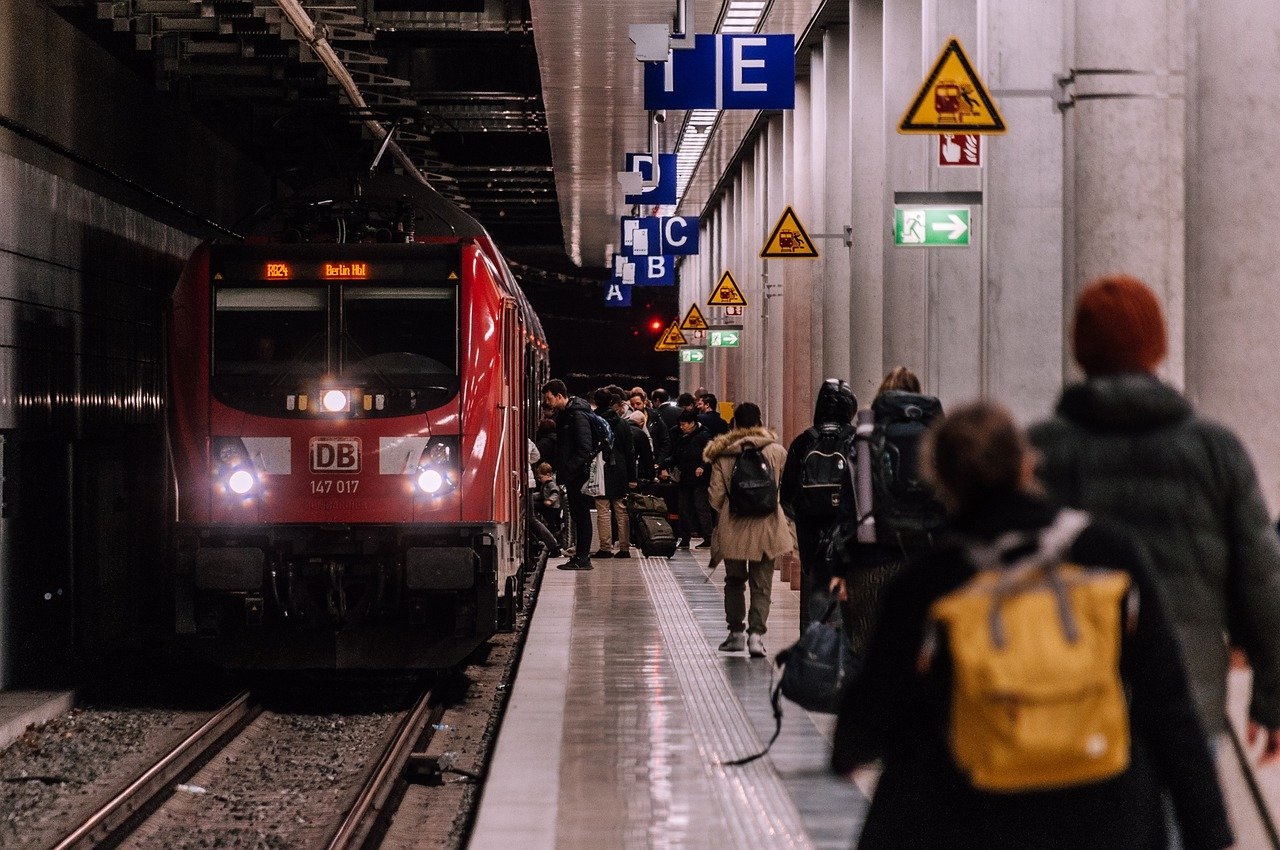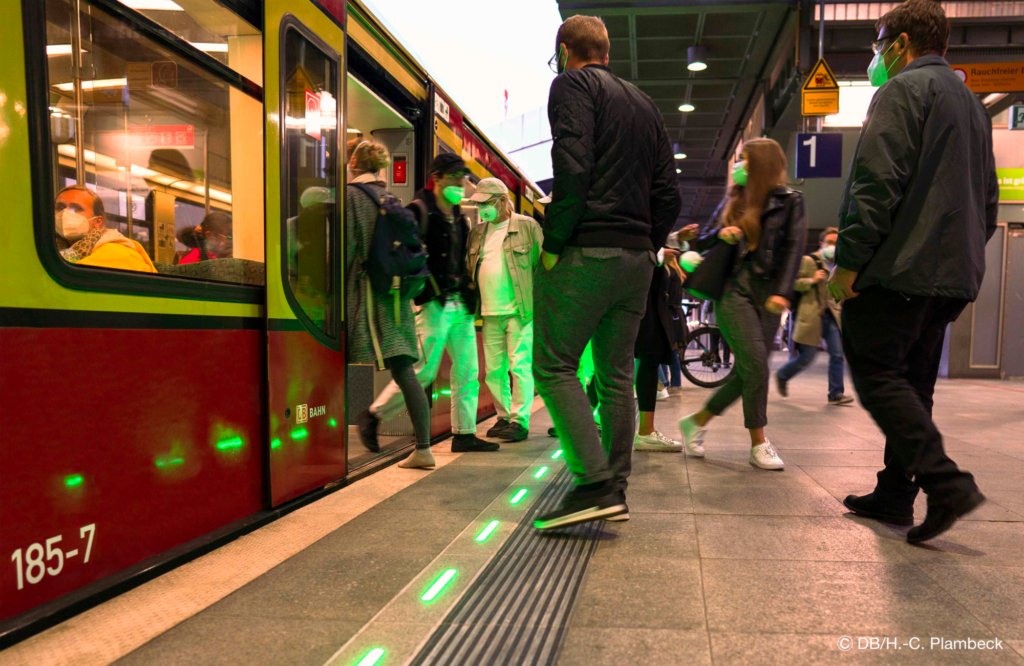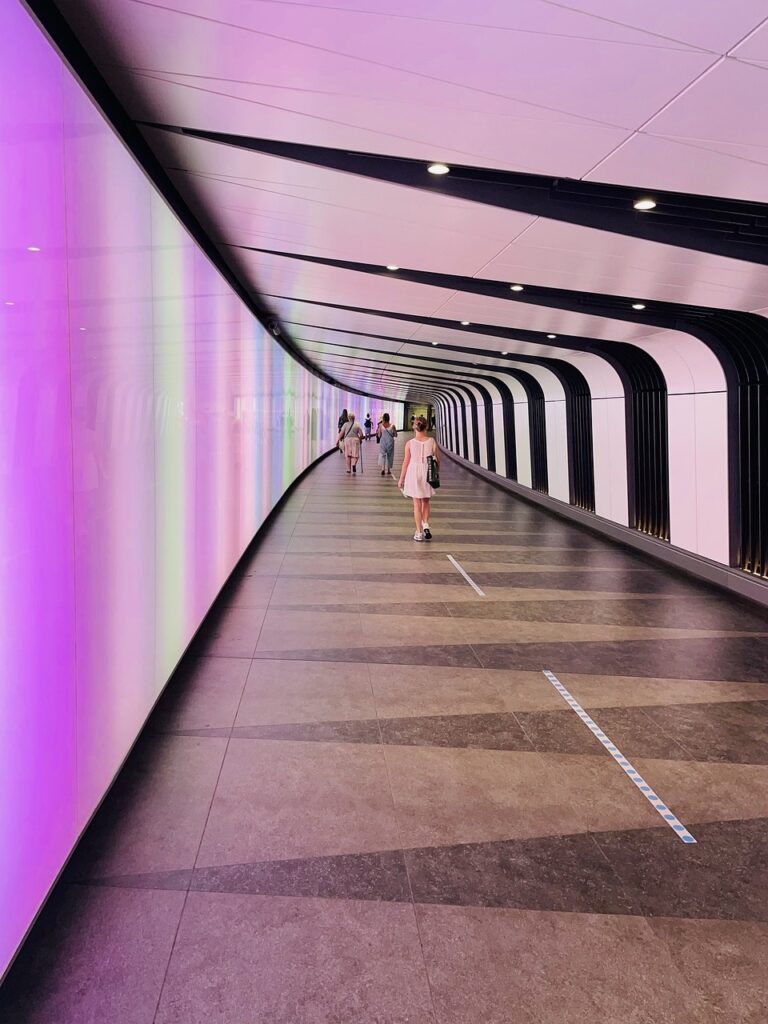Infra
Innovative Know-How from Saxony for Railway Infrastructure in Ireland

Innovative Know-How from Saxony for the Railway Infrastructure in Ireland
As one of the top 3 centers of the railway industry in Germany, Saxony is an attractive partner for the construction and modernization of the railway infrastructure and technology in Ireland, providing long-standing and diverse expertise in the fields of manufacturing, supply, equipment, and engineering and other services.
Signage on a platform
© Pixabay
A large number of projects, including the Dublin MetroLink and the Cork and Limerick Area Commuter Rail programs, are scheduled to be realized in the next years, and Saxon companies could contribute their know-how for the benefit of both sides.
Expertise in Tunnel Construction and Equipment
Tunnels are known to be one of the most challenging civil engineering structures in the transport infrastructure. On the one hand, experts from a wide variety of engineering and construction disciplines have to be coordinated and work together; and on the other hand, the standards for environmentally friendly, profitable, safe and failure-free construction and operation of tunnels are particularly high. In Saxony, numerous experts are dealing with such projects, e.g., the Geokompetenzzentrum Freiberg with its extensive know-how in geotechnical engineering, BST Freiberg GmbH & Co.KG, a service provider in the field of special civil engineering, and BUNG Ingenieure AG with offices in Dresden and Leipzig and experience in tunnel construction and tunnel safety . BUNG Ingenieure AG is currently part of a group of companies that prepares the documentation for the building permit for the Saxon-Czech Ore Mountain tunnel. This tunnel will be about 30 km long, making it the longest railway tunnel in Germany, and significantly reduce the travel time from Dresden to the Czech capital Prague and back.
Tunnel safety is another crucial aspect in such projects. Safety analyses and risk assessments help to assess tunnel safety and determine the technical equipment required. Saxon companies have developed various solutions for this purpose. The control systems of F&S Prozessautomation GmbH, for example, are designed to provide comprehensive monitoring of tunnel-specific safety systems such as lighting, ventilation, fire, extinguishing water, and power, and to identify and locate hazardous areas. HERMOS Systems GmbH is an engineering company for automation technology that specializes in the fields of system integration (e.g., building automation and monitoring of safety-relevant facilities in train stations, emergency lighting in tunnels) and control systems for visualization and operation in train stations.

Luminous platform edge from SIUT GmbH
© DB/H.-C. Plambeck/RailS
Innovative Solutions for Railway-Related Infrastructure
Saxony also has a wide range of know-how in the field of railway-related infrastructure: For example, Railbeton Haas GmbH supplies the concrete components used between the train and the platform. Schilderwerk Beutha GmbH produces enameled signs both for signage along the railways and for analog signs for passengers at train stations. ESA Grimma GmbH has many years’ experience in the fields of switch heating and lighting systems, among others. Paneling for train stations is the area of expertise of Omeras GmbH, which manufactures durable, resistant, enameled anti-graffiti paneling. Fittings and elements such as lamps, benches, or garbage cans can easily be fitted into the wall paneling. When it comes to the roofs of train stations, Plauen Stahl Technologie GmbH is the partner of choice. The company develops and builds the corresponding supporting and roof structures.
The start-up SIUT GmbH and its “Illuminated platform edge” project won the SET4FUTURE Innovation Award as a particularly innovative company. Intuitive passenger information systematically guides travelers, improving both the timeliness of the trains and the traveling comfort of the passengers, and consequently, the attractiveness of public transportation as a whole. The SET4FUTURE innovation cluster, which is funded by the Free State of Saxony and awards the prize, is sponsored by the industry network Rail.S. With more than 100 members from industry and science, the cluster is one of the largest railway technology networks in Germany, and co-founder of ERCI, the European Railway Clusters Initiative.
Attractive Research Partners in the Ecosystem
Innovation in the railway industry is also driven by attractive research partners. The “Friedrich List” Faculty of Transport and Traffic Sciences at the Dresden University of Technology, a “University of Excellence”, for example, is the largest academic center of excellence in this field, and its expertise in the railway industry is in high demand all around the world. The Laboratory Railway Construction at the Dresden University of Applied Sciences (HTW) is another important partner when it comes to testing of superstructure components, tests regarding variable climatic conditions in earthworks, or path and force measurements. Testing facilities are also provided by the Fraunhofer Institute for Ceramic Technologies and Systems (IKTS). It focuses on solutions for non-destructive testing of infrastructure and rolling stock, e.g., rails, overhead lines, wheel trucks, and wheelsets.

Modern design of station tunnels
© Pixabay
Saxon Companies Visit Ireland
Are you interested in the know-how offered by the Saxon companies? A delegation from Saxony is going to visit Dublin on October 23 and 24, 2024—you can meet the railway experts there. Within the framework of this trip, which is organized by Saxony Trade & Invest Corp. (WFS) in cooperation with Rail.S, they will present the planned railway projects and opportunities for Saxon companies to participate. The German-Irish Chamber of Industry and Commerce, the National Transport Authority (NTA) Ireland, Irish Rail, and Transport Infrastructure Ireland are partners of this project.
Nonetheless, Saxon companies are interesting business partners for British companies that are interested or already involved in railway projects in Ireland, e.g., in order to diversify their subcontractors and benefit from the know-how “made in Saxony”.
This article was originally produced by Saxony.







:max_bytes(150000):strip_icc()/roundup-writereditor-loved-deals-tout-f5de51f85de145b2b1eb99cdb7b6cb84.jpg)


